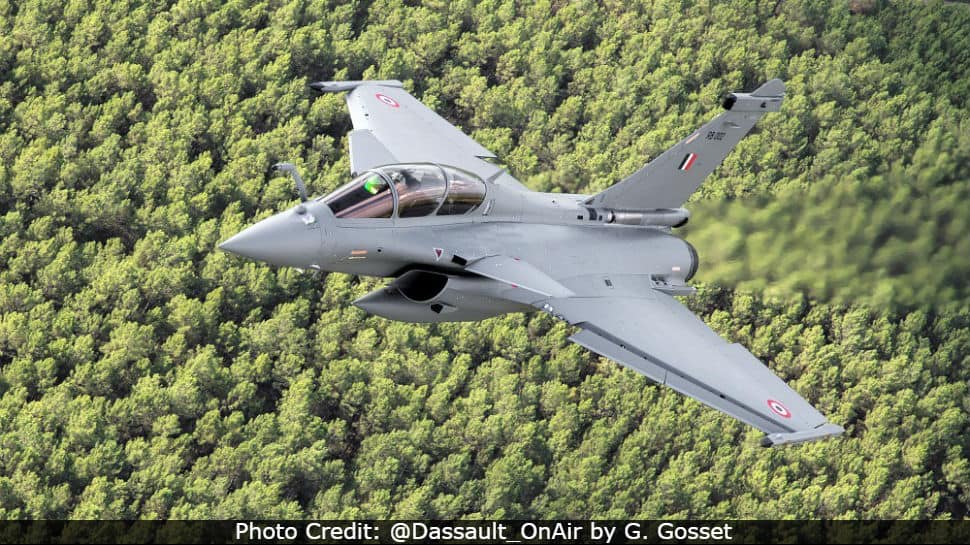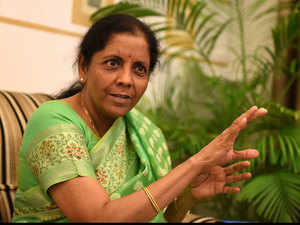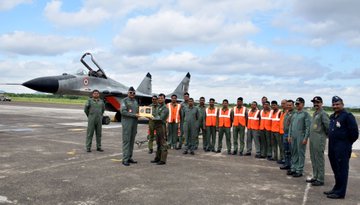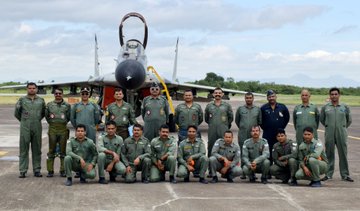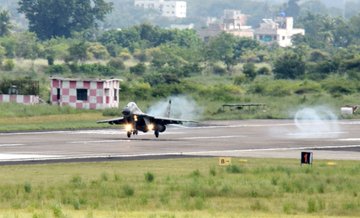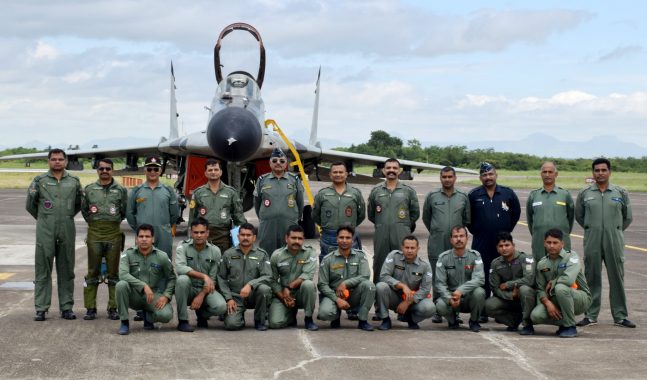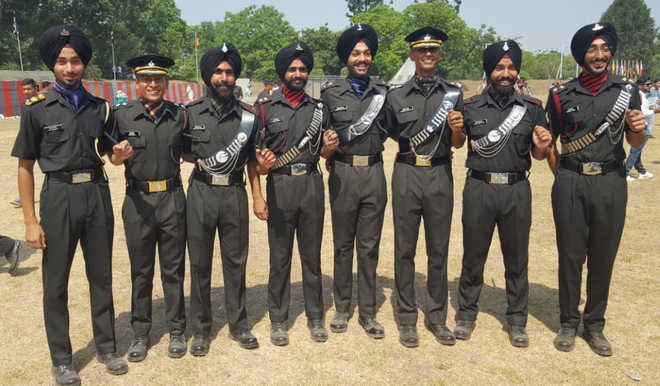
On the death anniversary of Maharaja Ranjit Singh — June 27 — it’s time to look afresh and recall some of the unprecedented achievements of a mighty Indian Maharaja, checkmating the mightier Englishmen, steam-rolling their Indian opponents with ease, one after another.
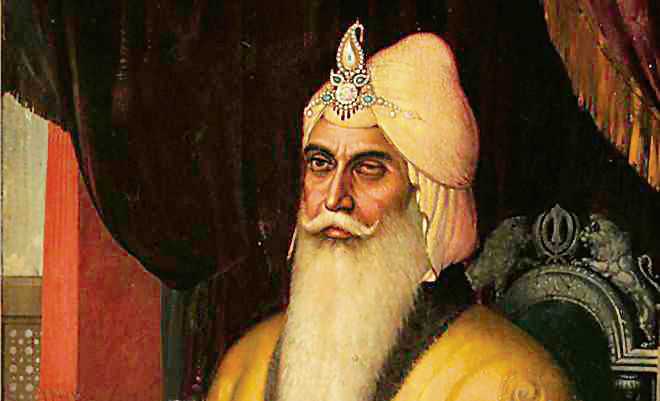
Ranjit Singh: A brilliant commander and warrior par excellence.
Abhijit Bhattacharyya
Commentator and Author
When Rabindranath Tagore wrote the immortal stanza on Sikhs: “Pancha nadir tire, beni pakaiya shire; dekhite dekhite gurur mantre jagiya uthichhe Sikh; nirmomo nirbhik” (on the banks of the five rivers, tying their hair and braids, the Sikhs responded to the clarion call of their Gurus to wake up from torpor to transform themselves as valiant fighters for their honour), one is not sure whether the poet had Maharaja Ranjit Singh in mind or not.
Nevertheless, the well-known fact is that Tagore wrote at least six poems on Sikh heroism and martyrdom owing to the indelible impression it left on his psyche. Thus, he wrote two poems in 1888, three in 1898, and one in 1935. Of them, three were on Guru Gobind Singh, one each on Banda Bahadur and Bhai Taru Singh, and one on the boy, Nehal Singh.
Be that as it may, if we re-focus from the spiritual to the statecraft of the Sikhs led by Ranjit Singh, what re-surfaces today is the mind-boggling action and thought process of the first geo-strategic thinker-cum-ruler of modern Indian history who knew how to call a spade a spade with the rapacious and roving British, notwithstanding his multi-front disadvantages.
On the death anniversary of Maharaja Ranjit Singh, who passed away on June 27, 1839, at Lahore, the capital of his empire, it’s time to look afresh and recall some of the unprecedented achievements of a mighty Indian Maharaja, checkmating the mightier Englishmen, steam-rolling their Indian opponents with ease, one after another. In a matter of days. Battle after battle. State after state. The London juggernaut across South Asian terrain appeared endless, and unstoppable.
When Ranjit was born (originally named Buddh Singh) on November 13, 1780, and growing, it was an era of perennial turbulence and anarchy in India. The Marathas (aspiring to be the Mughals’ successor on the Delhi throne) had already been brutally battered by Afghan chief Ahmad Shah Abdali (aka Durrani) in the third battle of Panipat (January 1761). Soon thereafter, the English (under Warren Hastings), too, fought the Marathas and ended with the treaty of Salbai (May 1782), thereby giving another rude jolt to the Indian dream of establishing ‘Hindu Pada Padashahi’ (the Great Hindu Kingdom).
Thus, when (minor) Ranjit, as the chief of Sukarchakia Sikh Misl, since April 1792, ascended the throne in April 1801 (at 20-plus), who would foresee the man reigning a long 38 years, till 1839? Perhaps, the ruler Ranjit himself also could not have had seen the future valour, achievement and foresight of his own self!
No wonder, Ranjit’s sixth sense-cum-vision told him to contain the British in the south through sweet words of diplomacy and curb the congenitally habitual invaders of India (since time immemorial) with the sword-wielding cavalry combatants to the north and north-west. Thus was concluded one of the rare, landmark treaties: the Treaty of Amritsar on April 25, 1809, between the British Government and the State of Lahore.
As many as 210 years have gone post the Amritsar Treaty, yet every Indian would be proud to peruse its semantics: “Both parties being anxious to maintain the relations of perfect amity and concord” were the opening words. The British want “perfect amity and concord” with an Indian ruler! How often has it happened during 19th-century Indian history? The treaty was concluded “by Rajah Ranjeet Singh on his own part, and by the agency of Charles Theophilus Metcalfe, on the part of the British Government.” Ranjit’s best bet came as a sort of guarantee by the British: “The British Government will have no concern with the territories and subjects of the Rajah” (Ranjeet Singh) “to the northward of the Sutlej”.
The strategic vision of Ranjit assured avoidance of ‘war on two fronts’. The British, too, having thus far arrived from their tiny island, were more than aware of their vulnerability owing to the real possibility of a Maratha revival in the heartland and the prospect of growing resentment in the periphery turning into a multi-front revolt across the Indian terrain. Both the British and the Punjab king secured their respective fronts.
Assured of stability and security, Ranjit had the north, north-west, and west to move his military; which he did. Successfully. With ‘one at a time’ policy. With a professional band of fortune-seeking, able commanders transcending borders and barriers of caste, language and religion, thereby putting Ranjit Singh way ahead of his times, compatriots, foes and friends alike. His sentence ‘Ek din sab lal ho jayega’ (One day everything will turn red) after seeing several red-colour territories on the map of South Asia (red denoting the British-conquered or -occupied Indian kingdoms and principalities) was prophetic. Ranjit Singh certainly was no prophet. He was an able ruler. A king. Far from pretentious. He had his plus points. He also had fault lines and share of failure.
He was a brilliant commander and himself a warrior par excellence without doubt. However, it was the misfortune of Punjab, and hence the history of India, that so great a visionary and geostrategic ruler like him would leave behind an empire destined to be doomed so fast and furious.
It’s of course no fault of Ranjit Singh that his was an essentially land power owing to Punjab (for that matter all territories which he conquered), Kashmir, Afghanistan and the fringe areas of Central Asia being landlocked. Hence, when the ‘great game’ began for the possession of land as buffer by the British and access to the Indian Ocean warm water port by Moscow (through the territories of South Asia) to break out of its land-fixative strategy, the importance of Ranjit Singh as the best buffer emerged for London and Moscow. His stability and ability were undoubtedly far superior, and preferable, to the eternal turbulence of Afghanistan which the British realised soon after his demise.
The British made the fatal mistake to fight the Afghans directly, in March 1839; but came back battered and shattered in 1842. There was no Ranjit Singh to give the British shelter, safety and security from/of/for the north-west frontier, to expand across other zones. The strong man of Punjab, Afghanistan, Kashmir and Central Asia was gone. And as it so often happens, an ‘over-strong’ predecessor is invariably succeeded by spineless, squabbling successors. Ashoka, Aurangzeb and Hitler: all were strong. Their states just capitulated after them. One is reminded of the old saying about the strong father’s weak son: “His sceptre was the bow of Ulysses which could not be drawn by a weaker hand.”


